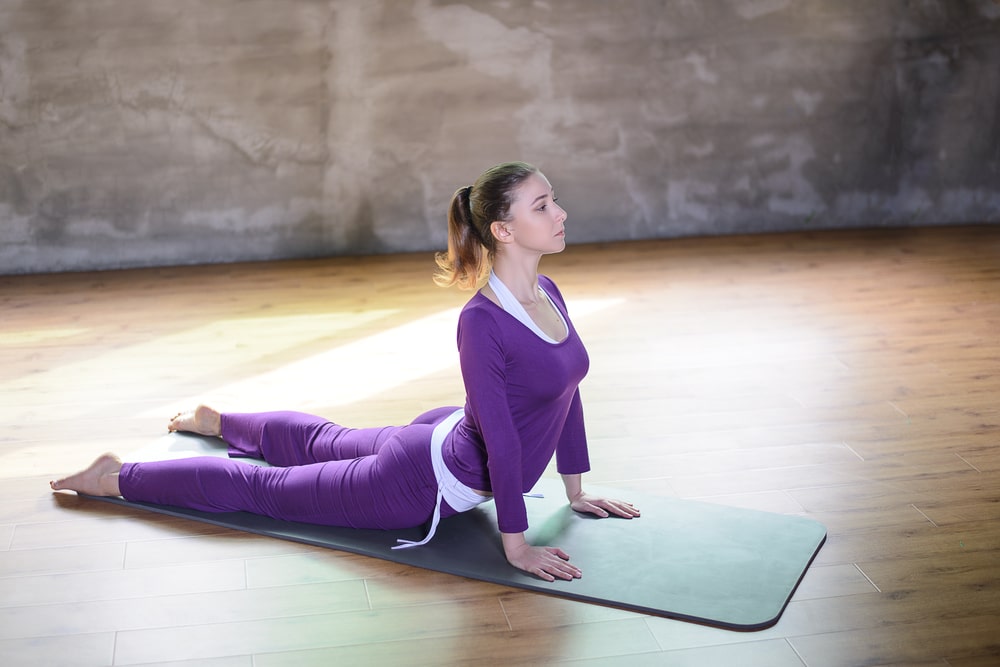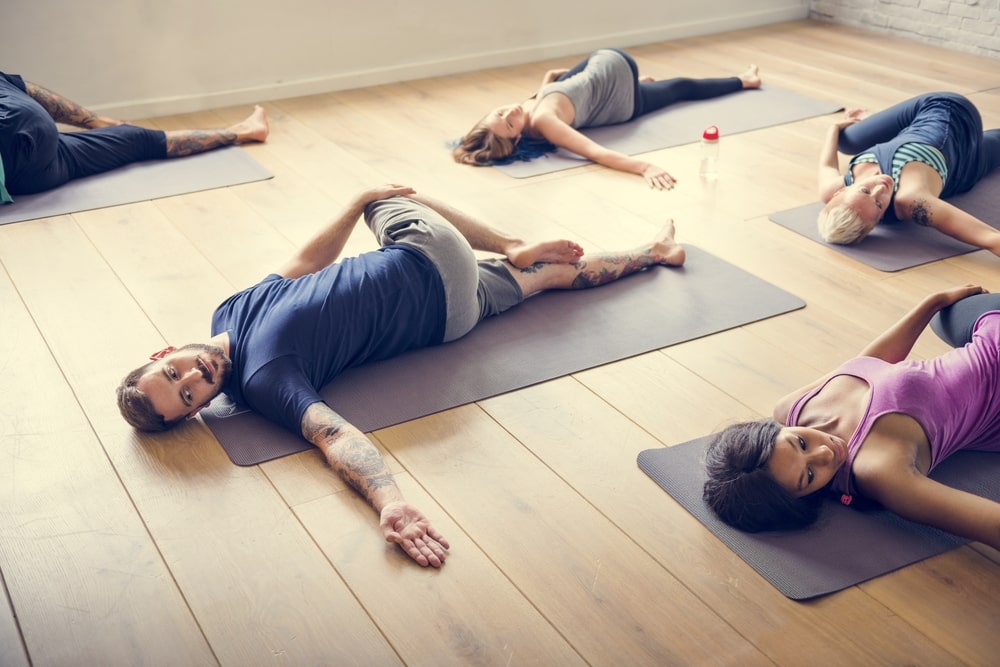Back pain can be painful, devastating and becomes a common reason for absence from work and for pursuing medical treatment. It can occur due to any injury or movement or any medical condition. It can also affect people of all ages. Fortunately, back exercises – is an important component of back pain treatment – are very helpful in rehabilitating the spine and alleviating the back pain. Exercise experts, qualified chiropractic professionals recommend a controlled and gradual back pain exercise program that is customized to each and every individual giving the most effective results. So, in today’s article, we highlight the importance of back pain exercises, benefits of backache exercises, and a detailed overview of different strengthening and aerobic exercises.
What are the benefits of exercises for relieving back pain?
When the exercises for relieving the back pain are done in a controlled and progressive manner then they will give many benefits that mainly include:
- The spine muscles are strengthened and the pressure from the spinal discs and the facet joints is removed.
- These exercises alleviate stiffness and improve mobility.
- They improve the circulation so that nutrients can better distribute through the body, mainly to the spinal discs.
- Endorphins are released that can relieve back pain naturally. A continuous release of endorphins helps in reducing the dependency on pain medication. Moreover, endorphins uplift mood and relieve the symptoms of depression (commonly occur due to chronic pain).
- These exercises minimize the frequency of the back or neck pain occurrences and reduce the severity of pain when it occurs.

Why are exercises important for back pain?
A regular exercise program and other fitness activities help to keep the back well by allowing the spinal discs to exchange fluids and this is how the disc obtains its nutrition. A healthy disc swells with water and squashes it out, similar to the action of a cleaning utensil. This sponge action allocates nutrients to the disc.
What are strengthening exercises to relieve back pain?
According to the pain experts, if a patient selects the back pain exercises carefully, it can help in reducing chronic back pain. Here are some of the strengthening exercises that help to relieve back pain:
Knee to Chest:
You can use this exercise to stretch lower back and rear end muscles.
First of all, lie flat on your back and point your toes to the sky. Then, slowly bend your right knee and pull your leg up to the chest. Then, wrap your arms around the thigh or knee and pull the knee gently towards the chest. Hold this position for 20 seconds. Gradually extend the leg to its starting position. Repeat this stretch 3 times for each leg.

Yoga Cat/Cow:
Begin this exercise by going down on all fours with your hands under your shoulders and your knees straight below your hips. Then, exhale and gently curve your spine. Inhale, stiffen your core muscles and round the back, like a cat. Move slowly in the middle of these movements and hold each position for around 5-10 seconds. Repeat this 10 times.

Cobra Stretch:
This exercise helps in stretching the tight abdominal muscles and also the lower back.
Begin this movement by lying on the stomach with the legs extended and the palms placed on both the sides of the head with the forearms and the elbow flat on the ground. After that, slowly push your body up in a way that your weight is resting on the forearms. Make sure that your hips are on the ground. When you notice that your abdominal muscles and lower back is gently stretched and you feel comfortable in this position then hold it for 10 seconds. Slowly, return to the initial position and repeat this movement 5 times. In case, if you have more flexibility in the lower back then try to straighten your arms.

Piriformis Seated Stretch:
This movement helps to lengthen the piriformis muscle (this muscle is located deep in the buttocks) over time. This muscle is actually a source of sciatica (radiating leg pain).
First of all, sit with a straight back. Then, cross your left leg over the right leg with the foot right next to the thigh and tuck the right leg in towards the buttocks. Place the right arm behind the left knee and stretch slowly. While doing this, make sure that your back is straight and your chest is lifted. Hold this for 20 seconds and other sides, three times.

Lying Knee Twist:
With this movement, the paraspinal muscles are stretched and the abdominal muscles are strengthened.
Start by lying on your back with the legs extended straightly. Then, bend the right knee upwards and cross it over the left side of the body. Now, hold in such a position in which you feel that your back and buttocks muscles are gently stretched, for 20 seconds. Tighten the core muscles and rotate your back to the center. Repeat this movement 3 times on each side.

Restful Pose:
This is a common pose in yoga (a restful child’s pose) that helps you to relax your body.
Start this by positioning yourself on the floor on the hands and the knees with the knees slightly wider than the hips distance apart. Turn the toes inwards so that they touch each other and push the hips back while bending the knees. When you positioned yourself comfortably, extend the arms forward fully and let your head fall forward into a relaxing position. Hold this pose for around 20 seconds and then slowly return to the starting position. Repeat this exercise three times.
If you have shoulder pain, place the arms on both sides of the body, extending towards the feet.

How aerobic exercises provide relief from back pain?
Aerobic exercise is an important part of any exercise regime. It improves circulation and elevates the heart rate. Aerobic exercise relieves the back pain by decreasing the stiffness and improving the flow of blood to the spinal structures, thus it increases the number of nutrients that reach out to the spine.
Low-impact aerobic exercise is the foremost option for back pain sufferers because it elevates the heart rate without jarring the spine and aggravating back pain.
Here are some of the most common low-impact aerobic exercises:
- Exercise walking
- Stationary bicycling
- Elliptical trainer or step machine
- Swimming and water aerobics
Exercise Walking:
This one varies from everyday walking in a manner that it is faster paced with the aim to elevate the heart rate and gently work on the muscles. A vital benefit of exercise walking is that it is gentler on the spine as compared to jogging and it doesn’t require any special equipment – except a nice pair of shoes – and it can easily be done at any location. If you wear some ankle or wrist weights, it can add some resistance to exercise. This exercise can be done indoors such as on a treadmill or in a mall, or outdoors such as around a neighborhood or on a nature track.
Elliptical Trainer or Step Machine:
Such machines help in stimulating the jogging, running, and walking up stairs movements, therefore providing a low-impact aerobic workout. Most of these machines have pedals or footholds that are suspended above the ground and glide up and down, so in this way, the feet never hit the hard surface throughout the exercise. Moreover, in many machines, there are resistance settings that can be adjusted to strengthen muscles.

Stationary Bicycling:
This mimics the cycling motion of a bicycle and provides an aerobic exercise that is without the pushing impact of riding on rough ground. Stationary biking is a preferable part of a spinning class that is guided by an instructor and available in various workout options for the beginners or other experienced cyclers.

Swimming and Water Aerobics:
Exercising in the water combines the factors of added resistance and natural buoyancy to make an aerobic exercise that minimally impacts the spine. If you feel difficulty while working out on a hard surface then swimming and water aerobics is the best option to consider. Certain swim strokes or water exercises are taught as part of a class or may be suggested by the doctor.

Points to ponder:
If the back pain aggravates at night and while lying flat, if it continues for six weeks or more, if it is connected with weight loss and fever, or if you’ve recently tumbled or had osteoporosis then you should avoid exercising.
Some other signs that you should check out while exercising are killing pain down one or both legs, abruptly crooked posture, a failure to stand up straight, or holding your breath when altering the position.
You may feel like relaxing, but stirring is good for your back. Exercises for back pain can reinforce back, stomach, and leg muscles. They help upkeep your spine, dismissing back pain.
For finding a right aerobic exercise regime, personal preferences and a process of trial and error should be looking out. These aerobic exercises are dependent on a particular condition, the levels of back pain, and the lifestyle of every individual.
Always ask your health care expert or qualified professional chiropractor before doing any exercise for back pain. Dependent on the cause and strength of your pain, some back pain exercises may not be optional and can be injurious.
Disclaimer: The material in this article is given for only educational and informational purposes and it shouldn’t be constituted as professional medical advice. You should consult a qualified chiropractor or medical professional before doing any exercise program. If you feel any difficulty or pain while doing these exercises, stop and immediately see your doctor.

